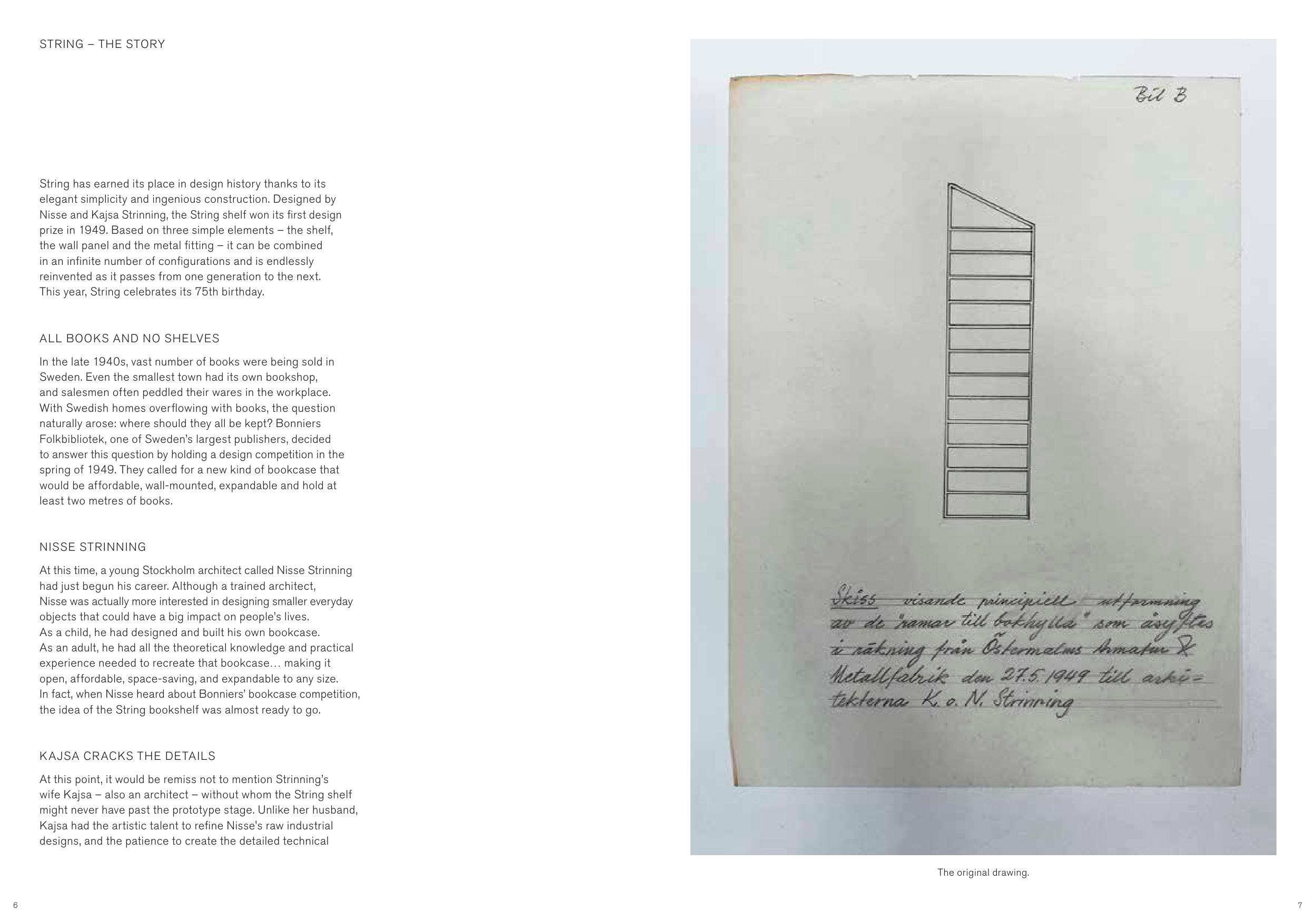6
7
STRING – THE STORY
String has earned its place in design history thanks to its
elegant simplicity and ingenious construction. Designed by
Nisse and Kajsa Strinning, the String shelf won its first design
prize in 1949. Based on three simple elements – the shelf,
the wall panel and the metal fitting – it can be combined
in an infinite number of configurations and is endlessly
reinvented as it passes from one generation to the next.
This year, String celebrates its 75th birthday.
ALL BOOKS AND NO SHELVES
In the late 1940s, vast number of books were being sold in
Sweden. Even the smallest town had its own bookshop,
and salesmen often peddled their wares in the workplace.
With Swedish homes overflowing with books, the question
naturally arose: where should they all be kept? Bonniers
Folkbibliotek, one of Sweden’s largest publishers, decided
to answer this question by holding a design competition in the
spring of 1949. They called for a new kind of bookcase that
would be affordable, wall-mounted, expandable and hold at
least two metres of books.
NISSE STRINNING
At this time, a young Stockholm architect called Nisse Strinning
had just begun his career. Although a trained architect,
Nisse was actually more interested in designing smaller everyday
objects that could have a big impact on people’s lives.
As a child, he had designed and built his own bookcase.
As an adult, he had all the theoretical knowledge and practical
experience needed to recreate that bookcase… making it
open, affordable, space-saving, and expandable to any size.
In fact, when Nisse heard about Bonniers’ bookcase competition,
the idea of the String bookshelf was almost ready to go.
KAJSA CRACKS THE DETAILS
At this point, it would be remiss not to mention Strinning’s
wife Kajsa – also an architect – without whom the String shelf
might never have past the prototype stage. Unlike her husband,
Kajsa had the artistic talent to refine Nisse's raw industrial
designs, and the patience to create the detailed technical
The original drawing.


